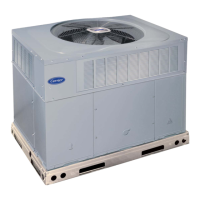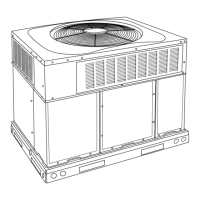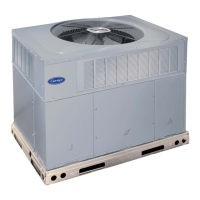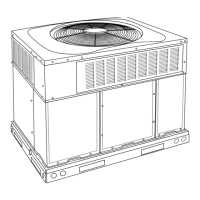Table 19 - Troubleshooting Guide-Heating
SYMPTOM CAUSE
Water in gas line
No power to furnace
No 24-v power supply to control circuit
Burners will not ignite Mis-wired or loose connections
Misaligned spark electrodes
No gas at main burners
Dirty air filter
Gas input to furnace too low
Inadequate heating Unit undersized for application
Restricted airflow
Limit switch cycles main burners
Poor flame characteristics
Incomplete combustion results in: Aldehyde odors,
carbon monoxide, sooting flame, floating flame
REMEDY
Drain. Install drip leg.
Check power supply fuses, wiring or circuit breaker.
Check transformer.
NOTE: Some transformers have internal over-current protection
that requires a cool-down period to reset.
Check all wiring and wire nut connections
Check flame ignition and sense electrode positioning.
Adjust as necessary.
1. Check gas line for air. Purge as necessary. NOTE: After purging
gas line of air, wait at least 5 minutes for any gas to dissipate be-
fore attempting to light unit.
2. Check gas valve.
Clean or replace filter as necessary
Check gas pressure at manifold match with that on unit nameplate
Replace with proper unit or add additional unit
Clean or replace filter. Remove any restriction.
Check rotation of blower, temperature rise of unit. Adjust as neces-
sary.
1. Tighten all screws around burner compartment
2. Cracked heat exchanger. Replace.
3. Unit over-fired. Reduce input (change orifices or adjust gas line
or manifold pressure).
4. Check burner alignment.
5. Inspect heat exchanger for blockage. Clean as necessary.
Table 20 - Troubleshooting Guide-LED Status Codes
SYMPTOM CAUSE REMEDY
Check 5-amp fuse son IGC*, power to unit, 24-v circuit breaker,
No Power or Hardware fail- and transformer. Units without a 24-v circuit breaker have an
ure Loss of power to control module (IGC)*. internal overload in the 24-v transformer. If the overload trips,
(LED OFF) allow 10 minutes for automatic reset.
Limit switch faults Check the operation of the indoor (evaporator) fan motor, Ensure
(LED 2 flashes) High temperature limit switch is open. that the supply-air temperature rise is in accordance with the
range on the unit nameplate. Clean or replace filters.
Flame sense fault
The IGC* sensed flame that should not be present. Reset unit. If problem persists, replace control board.
(LED 3 flashes)
4 consecutive limit switch Check the operation of the indoor (evaporator) fan motor and that
faults Inadequate airflow to unit. supply-air temperature rise agrees with range on unit nameplate
(LED 4 flashes) information.
Ignition lockout fault Check ignitor and flame sensor electrode spacing, gaps, etc.
(LED 5 flashes) Unit unsuccessfully attempted ignition for 15 minutes. Ensure that fame sense and ignition wires are properly terminated.
Verify that unit is obtaining proper amount of gas.
Verify wiring connections to pressure switch and inducer motor.
Pressure Switch fault Verify pressure switch hose is tightly connected to both inducer
(LED 6 flashes) Open pressure switch, housing and pressure switch, Verify inducer wheel is properly
attached to inducer motor shaft. Verify inducer motor shaft is turn-
ing.
Rollout switch will automatically reset, but IGC will continue to
Rollout switch fault lockout unit. Check gas valve operation. Ensure that induced-draft
(LED 7 flashes) Rollout switch has opened, blower wheel is properly secured to motor shaft. Inspect heat
exchanger. Reset unit at unit disconnect.
Internal control fault Microprocessor has sensed an error in the software If error code is not cleared by resetting unit power, replace the
(LED 8 flashes) or hardware. IGC*.
Temporary I hr auto reset I Reset 24-v. to control board or turn thermostat off, then on again.
(LED 9 flashes) Electrical interference impeding IGC software Fault will automatically reset itself in one (1) hour.
*WARNING /_ : If the IGC must be replaced, be sure to ground yourself to dissipate any electrical charge that my be present before handling new control
board. The IGC is sensitive to static electricity and my be damaged if the necessary precautions are not taken.
IMPORTANT: Refer to Table 19-Troubleshooting Guide-Heating for additional troubleshooting analysis.
LEGEND
IGC--Integrated Gas Unit Controller
LED--Light-Emitting Diode
dO

